Herding Fun and Stimulation
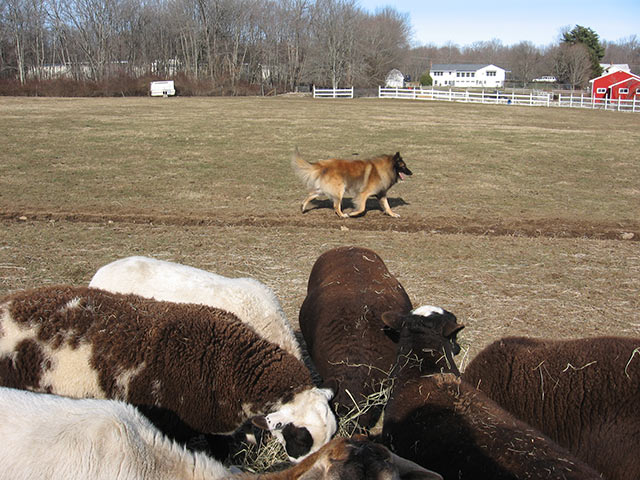
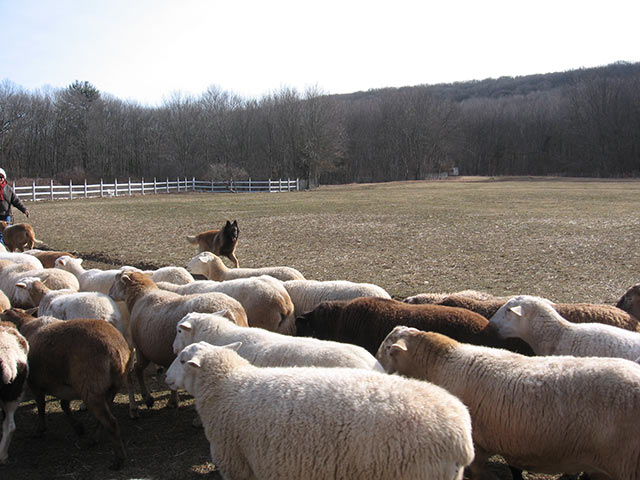
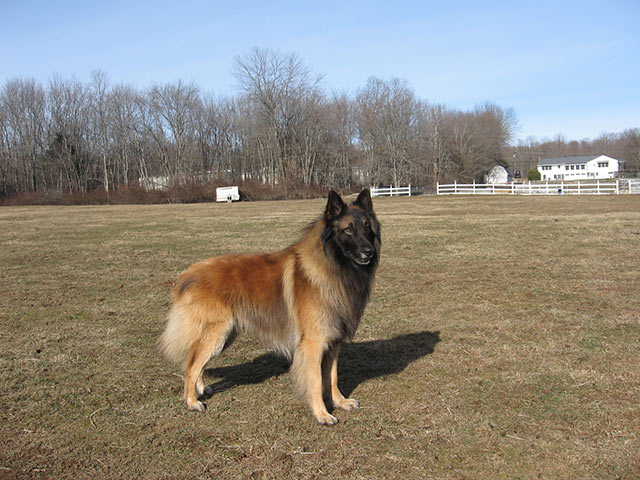
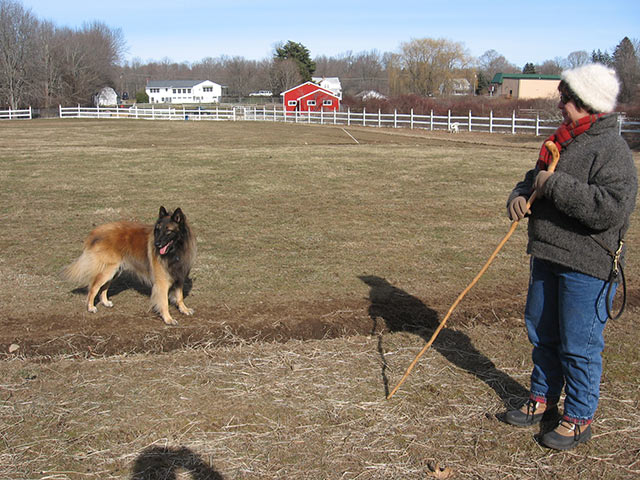
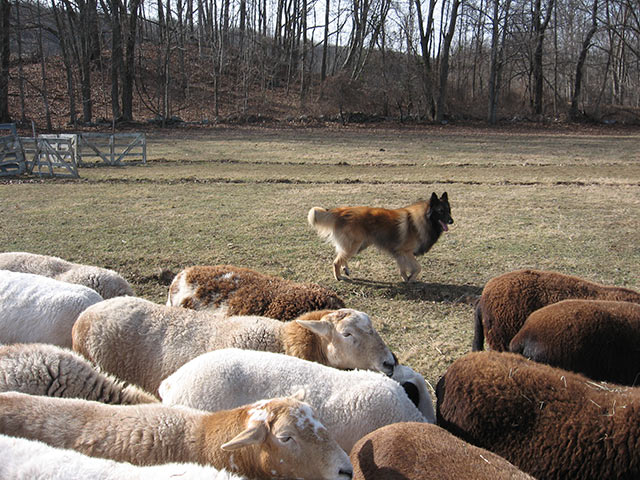
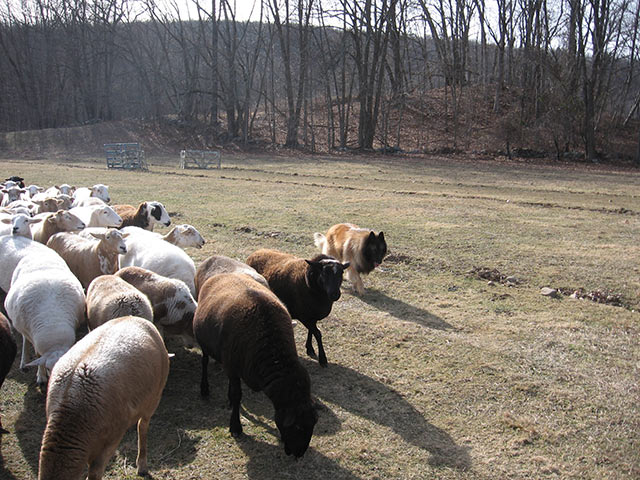
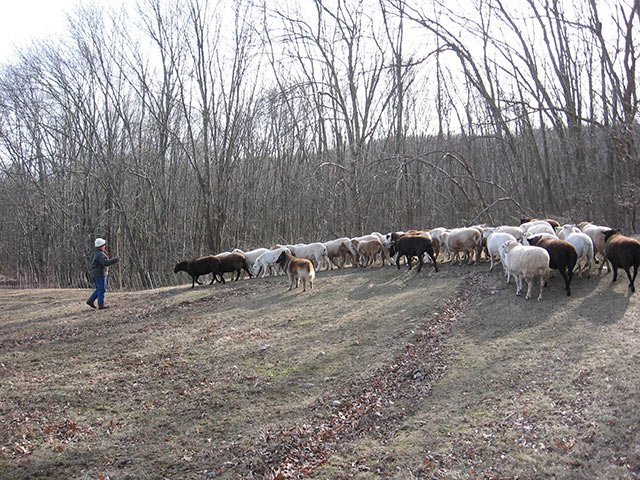
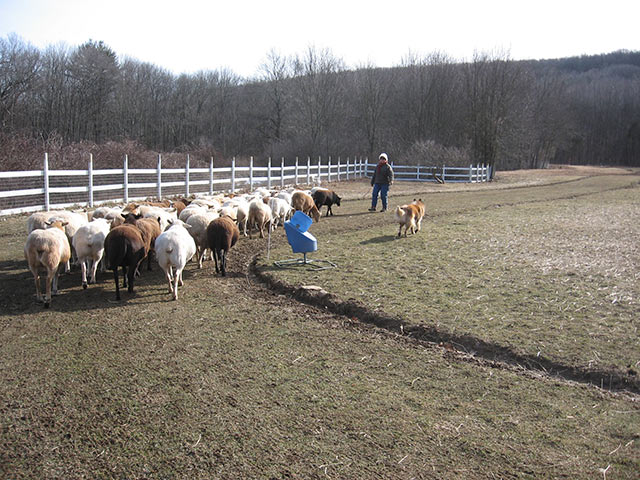
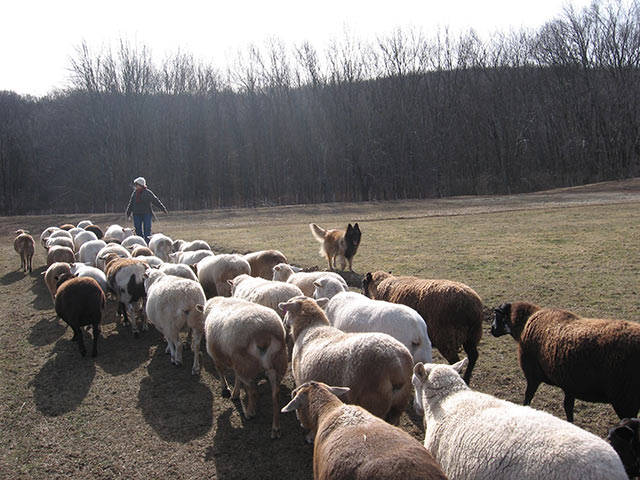
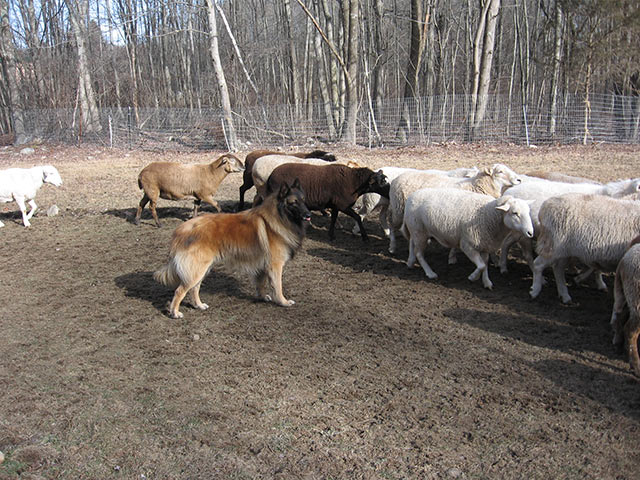
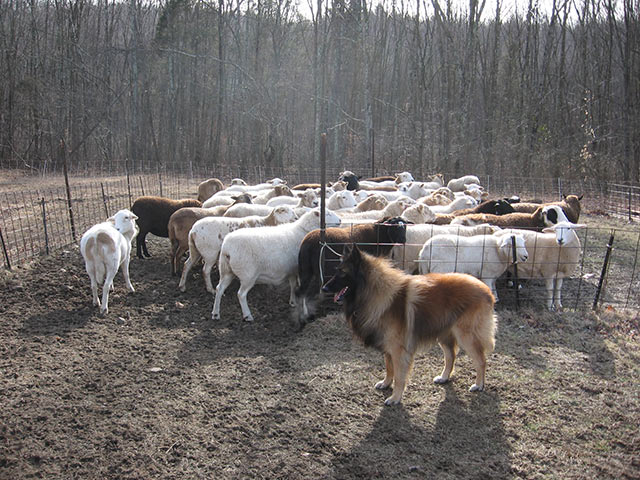
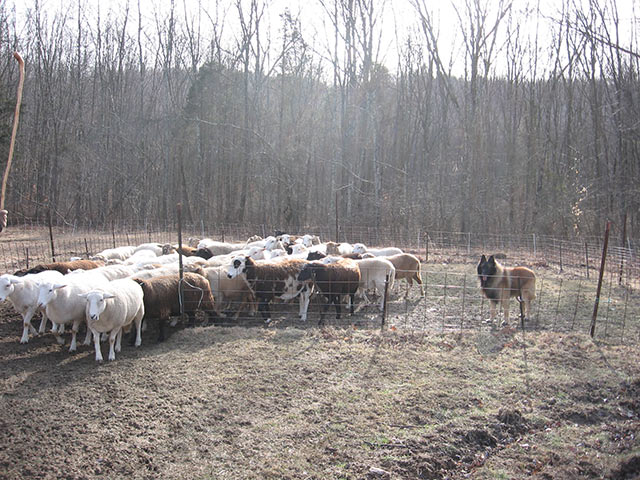
A loose patch of hay blows over the border, and three bold sheep wander across to get it. Almost floating, Truman turns and smoothly rushes at the sheep. With no physical contact, no barking, and without getting closer than five feet, Truman sends a commanding signal: focusing his gaze on the sheep, he tenses his body, leans forward, and stomps his front paws on the ground. The sheep turn back inside the defined border. Content, the sheep settle down and begin eating again. Truman's eyes are steady, his ears erect as he constantly looks on, breathing with quick, misty puffs.
This is a practice session at Meadowbrook Farm, which is owned by Carol Weigand in Bozrah, CT. Truman is preparing for a herding field trial, where he will be judged by how well he safely directs as many as 200 sheep. Trials are meant to recreate real-world situations. "Imagine you're a farmer, taking your sheep to market," Laurin explains. "The dog has to keep the sheep on the road or off the road at different times. The dog has to check if there are cars coming when you cross a major thoroughfare. The dog has to make sure the sheep don't fall into the water while crossing a bridge. Sheep can't swim because of their wool."
Laurin raises the crook and directs Truman to begin guiding the sheep out of the grazing area. The woolly group files along a path, towards a narrow bridge. Truman trots along the pack to make sure everyone crosses safely. A few minutes later, Truman corrals the sheep into an enclosure, and Laurin, with a proud smile, closes the gate. This part of the job done, Laurin shouts, "What a good boy!" Truman jumps up, puts his front paws playfully into his owner's arms. Then Laurin opens the gate and the sheep stream out, with Truman guiding them back toward the grazing area.
On another weekend, Laurin and Truman work together in a very different scene: the AKC show ring. In the ring, Truman moves with the same lightness he exhibits in the field, although he is on the end of a leash. "It's a double life," Laurin says. "One is like dressing up and going out to a nice restaurant. For the other, you get to dress down."
The show ring is where Laurin learned to compete. In 1959, her family got their first Belgian Tervuren. Even as a child, Laurin was earning ribbons.
But it was not until 1999 that Laurin got her first taste of herding. "I was at a national show in Wisconsin," she says. She was there with her Belgian Tervuren named Desi, already an AKC champion. "I got there early, so I wandered over to the herding area. As I watched, I kept thinking, 'Desi could do this better!'" Laurin returned home to Somers, CT, and located Ms. Weigand's farm, where she took Desi to work with sheep. Desi was a natural. Soon, Desi was competing in herding trials and earned her Herding Excellence award. "Desi has such great instincts," Laurin says. "Even as a total novice, it's like she was reading my mind. She never grabbed a sheep or chased one. It was almost overwhelming, all the positive comments I got from herding judges." Even better is how they recognized Desi's other accomplishments. "Lots of herding people couldn't believe Desi was also an AKC champion."
To Laurin, this makes perfect sense. After all, Belgian Tervurens were bred for herding, so it seems natural that her dogs would succeed in both arenas. "It's teamwork, whether you're in the ring or out in the field. If you and your dog aren't working together, you won't get the job done in either place." She cites other similarities. "In both places, the dog wants to please you. There is a willingness to move forward and get their reward."
Both in the ring and out in the field, Laurin says, the owner's job is to build a dog's confidence. "Your dog must know that you won't let anything negative happen. When they know this, they'll do whatever you ask."
Laurin compares the ring and the field, from her own and her dog's perspective. "The dogs definitely know the difference between the two. Out in the field, the dog gets to decide on their own, but is still listening to you. Sometimes, you'll see someone telling their dog to go this way, but the dog looks at them as if to say, 'Why are you sending me over there, when the problem is over here?' I'm so impressed with my dogs when they are herding. Lots of times, I stand back for 10 minutes and watch Truman work. It's so beautiful, and I can just admire him."
In the breed ring, Laurin sees opportunities to appreciate her dog's finer traits. "You can see things like how they stand, or how their ears are. But you need the perspective of people on the sidelines or other exhibitors to know about your dog's general presence, because you're in there with them."
Laurin beams with pride when show-ring judges comment on Truman's beauty, how he meets the AKC breed standards. But she is modest. When Truman wins, Laurin does not tell the judge that behind the show-day aesthetics are tremendous herding skills."But I hope judges recognize a dog with the right intelligence, temperament, soundness, movement, and correct coat to withstand the elements."
Early success with Desi got Laurin hooked. Now nine years old, Desi is retired. Although Desi never became a herding champion, her son, Truman, is continuing where his mother left off. Laurin is hoping to see Truman become a herding champion, perhaps this year. He is already an AKC breed champion in the ring. "Doing both things makes you better at each," she says. "You can see your dog blossoming. You can see their intelligence growing. It all just comes together, and it's better for both of you. You see a whole different dog, and you have a much deeper relationship."
